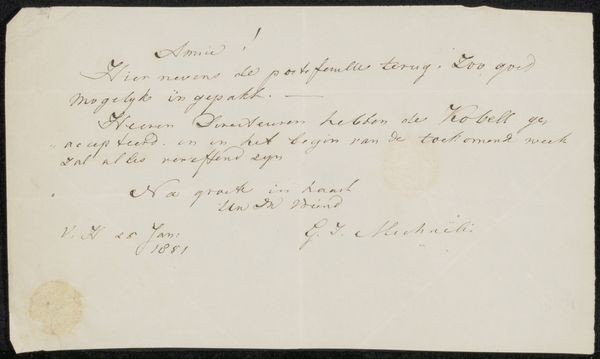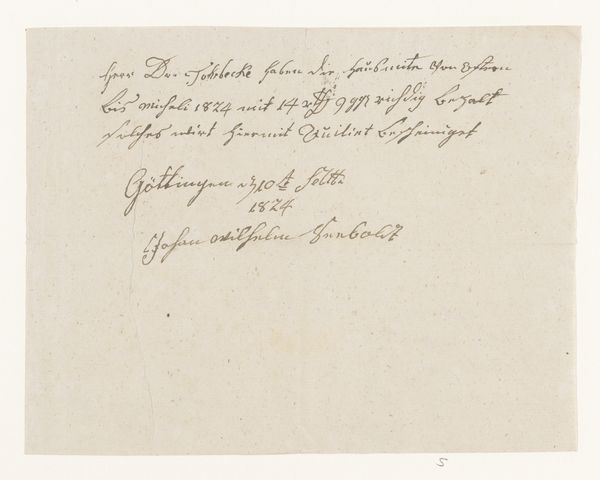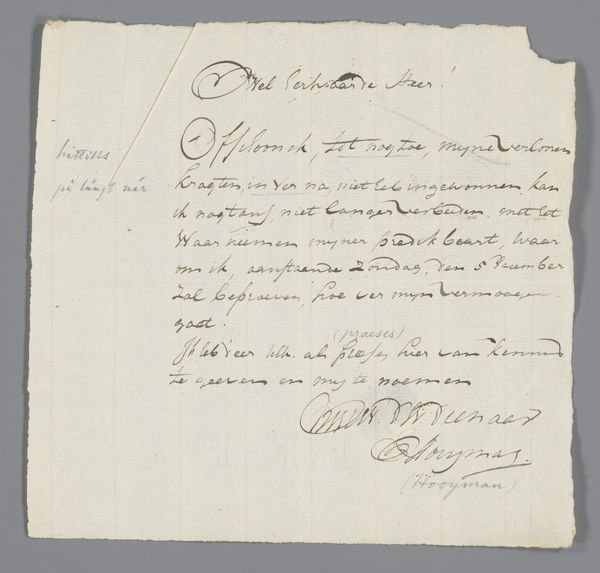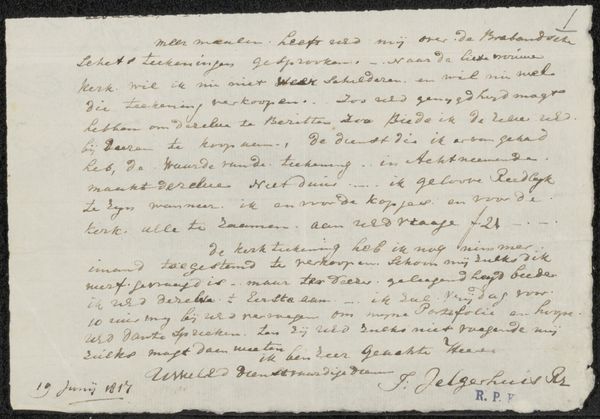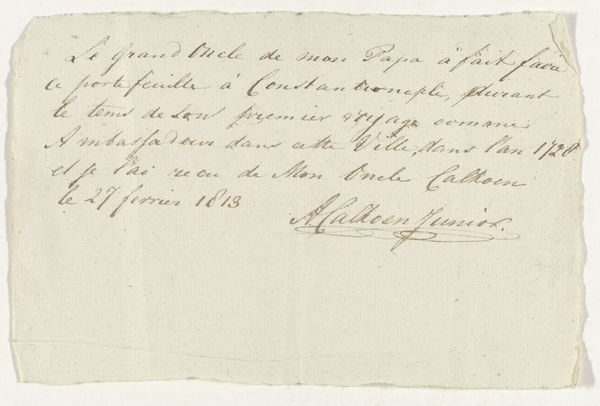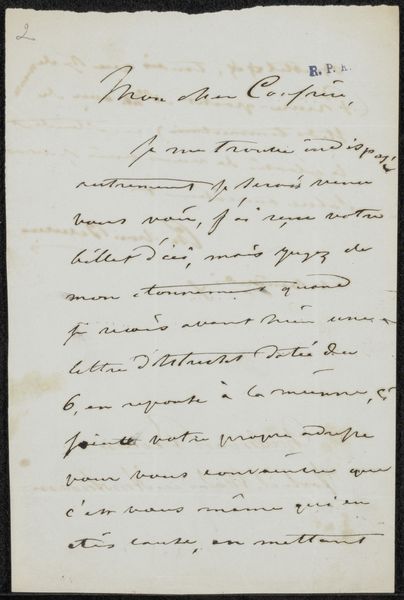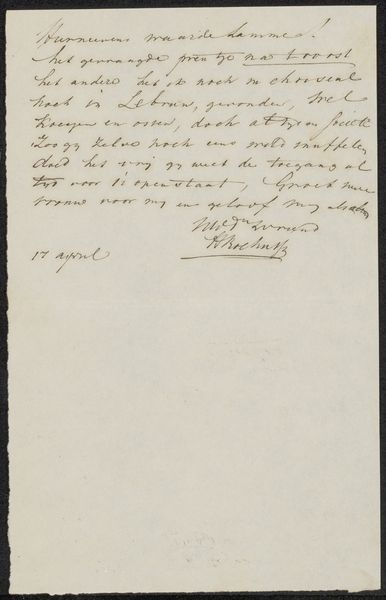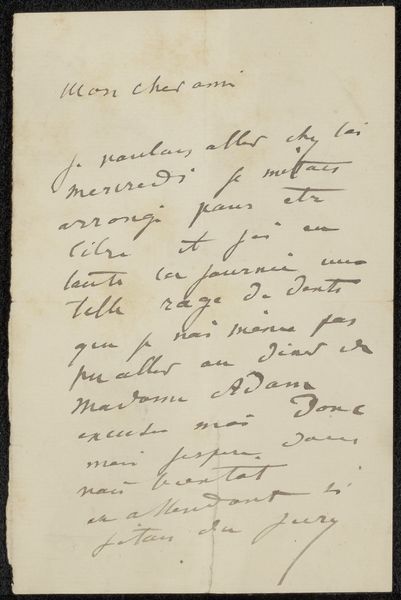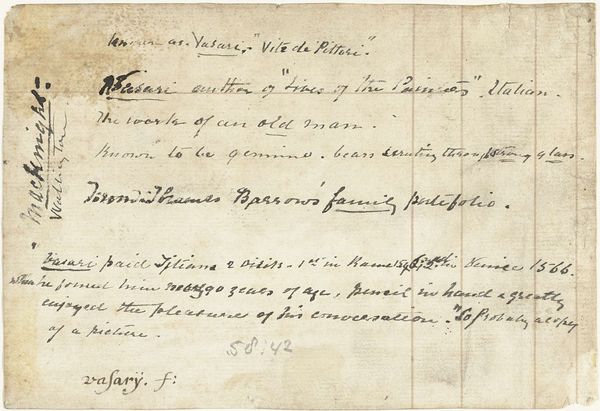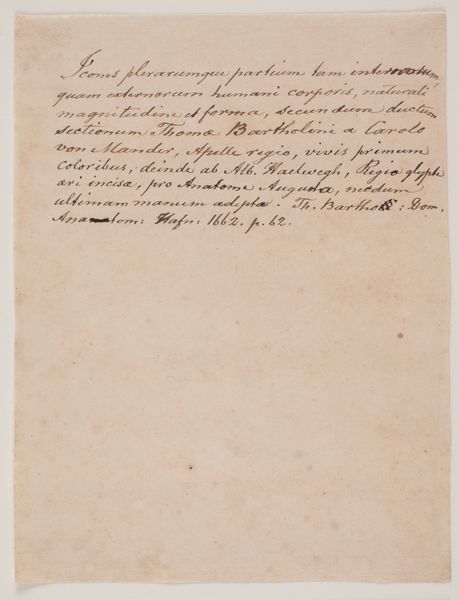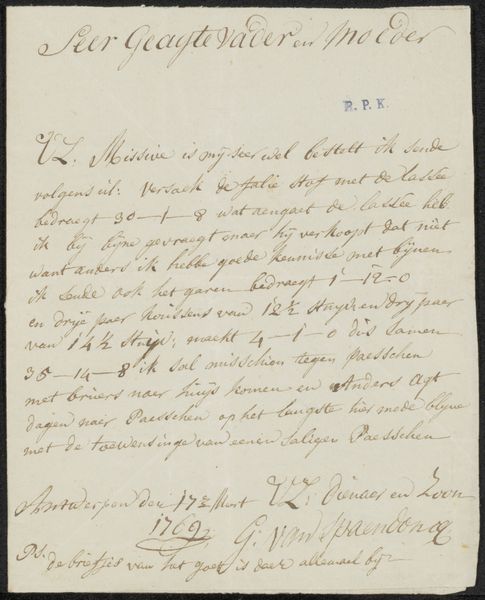
drawing, paper, ink
#
drawing
#
medieval
#
hand-lettering
#
ink paper printed
#
hand lettering
#
paper
#
ink
#
calligraphic
#
calligraphy
Dimensions: height 17.5 cm, width 20 cm
Copyright: Rijks Museum: Open Domain
Editor: Here we have "Document," possibly created between 1823 and 1829 by an anonymous artist. It's an ink drawing on paper, and the old script really catches my eye. What do you see in this piece? Curator: I see a fascinating glimpse into the social function of record-keeping and communication in the 19th century. It's not just the individual message but the context. Whose transaction is this, who is the "Dr. Thorbecke" mentioned, and how did this kind of document function within the broader financial system of the time? The aesthetic beauty of the script is undeniable, but consider the societal systems required to produce the paper, ink, and writing implements. How were such skills and materials distributed across society? Editor: That’s a good point. It’s easy to focus on the individual aesthetic, but what about the broader social context? How might its display in a museum today change or reinforce certain ideas about wealth, access, and literacy in that era? Curator: Precisely. The act of framing and exhibiting a mundane document elevates it, but also invites critical questions. Did Dr. Thorbecke hold a certain social standing? What opportunities might others like him possess compared to the vast majority of people in the period? By examining the politics of imagery within the work itself, we can gain a far greater understanding. What do we gain, and what do we lose by presenting this as an example of fine art? Editor: That's a really interesting perspective; I hadn’t considered how its display today would change how we view this simple financial document. It really makes you think about how museums participate in the shaping of history. Curator: Absolutely. It reminds us to continually question the choices of display and their inherent power.
Comments
No comments
Be the first to comment and join the conversation on the ultimate creative platform.
